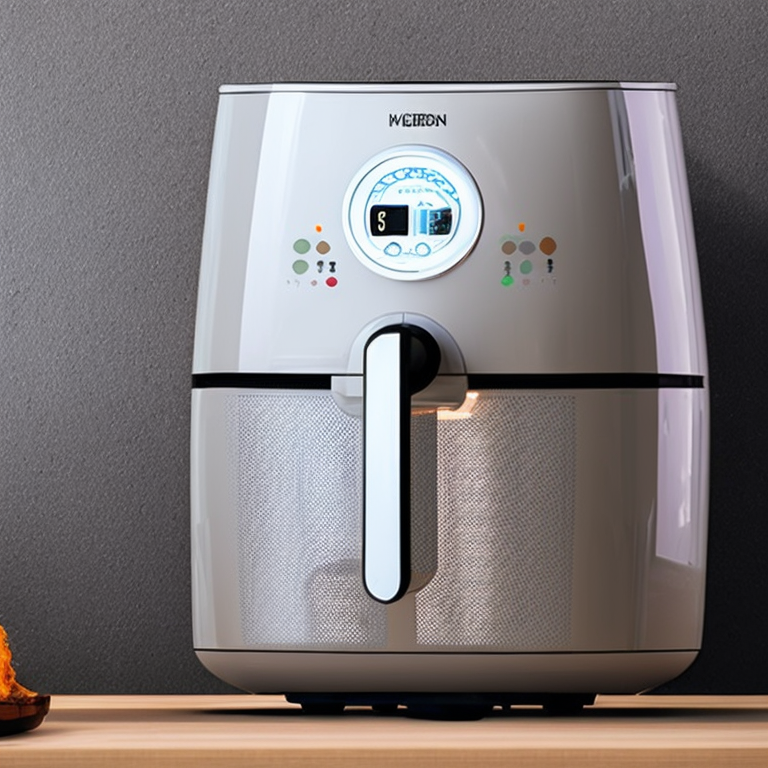
No, you should never put cling film in an air fryer. The intense heat circulating inside an air fryer (typically 160-200°C) will cause standard cling film to melt, potentially releasing harmful chemicals into your food and damaging your appliance. At airfryerrecipe.co.uk, we always recommend using materials specifically designed for high-heat cooking when preparing your favourite air fryer recipes.
The fundamental issue with using cling film in an air fryer comes down to temperature tolerance. Most household cling films begin softening at around 110°C and will melt completely at temperatures your air fryer easily reaches. When heated beyond its limits, the plastic can warp, drip onto heating elements, or even ignite in extreme cases. Unlike conventional ovens where you might use cling film for covering dishes, air fryers circulate heat much more aggressively at close range.
Another concern is chemical migration. As cling film breaks down under heat, substances like plasticisers can transfer to your food. These aren't just unpleasant - they could pose health risks with regular exposure. For safe food covering in your air fryer, consider our air fryer conversion chart to adapt traditional cooking methods properly.
Several problematic scenarios can unfold if you attempt to use cling film in an air fryer. The film will likely shrink and melt within minutes, potentially fusing to your food or the air fryer basket. This creates both a cleaning nightmare and possible fire hazard if molten plastic contacts heating elements. You might notice smoke, a burning smell, or visible melting within the first 2-3 minutes of operation.
In less extreme cases, the cling film may simply become brittle and shatter, leaving plastic fragments in your meal. This is particularly dangerous with fatty foods that reach higher temperatures, like the chicken recipes many air fryer enthusiasts love. Always remove any plastic wrapping before cooking, even if the packaging claims microwave safety.
No commercially available cling film is designed for air fryer use. While some specialty high-temperature plastics exist for industrial applications, these aren't food-grade or readily available to consumers. Even "oven-safe" cling films (rare in the UK market) typically have maximum temperature ratings far below air fryer operating ranges. When in doubt, check your air fryer manual - most manufacturers explicitly warn against plastic wraps.
For covering foods in your air fryer, parchment paper makes an excellent cling film substitute. Specifically designed air fryer parchment with pre-cut holes allows proper heat circulation while preventing mess. Silicone lids or microwave-safe glass containers (without lids) also work well for reheating leftovers without plastic risks.
If you're meal prepping air fryer meals in advance, store them in glass containers and simply remove the lid before reheating. For cleaning melted plastic accidents, our guide to air fryer cleaner solutions can help restore your appliance safely.
Some people wonder about briefly reheating cling film-wrapped foods in air fryers. This remains unsafe - even short exposure to high heat can compromise the plastic's integrity. Always transfer food to an appropriate container, removing all plastic wraps, foil covers, and even those little plastic sauce containers sometimes included with takeaways.
Leading air fryer brands universally advise against using cling film in their products. Ninja, Philips, and Cosori all include explicit warnings in their manuals about plastic wraps. Using non-approved materials may void your warranty, especially if damage occurs. The intense air circulation in modern air fryers creates conditions far more demanding than conventional ovens where some plastics might temporarily survive.
This caution extends beyond just cling film - many air fryer manuals also warn against plastic containers, certain silicone molds, and even some types of aluminium foil. When adapting traditional recipes for your air fryer, always consider how the cooking method changes material safety factors compared to conventional ovens or microwaves.